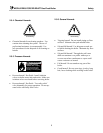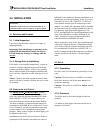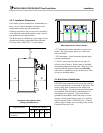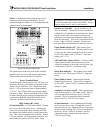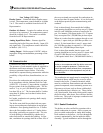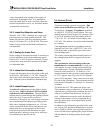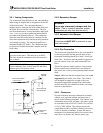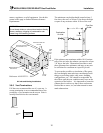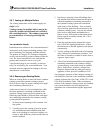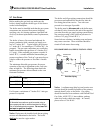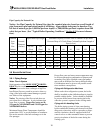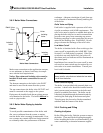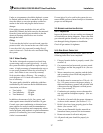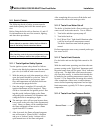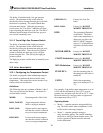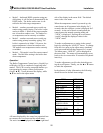
MODU-FIRE® FORCED DRAFT
Gas-Fired Boiler Installation
3.6.7 Venting for Multiple Boilers
The venting instructions in this manual apply to a
single boiler.
Venting systems for multiple boilers must be de-
signed by qualified professionals and verified by
the vent manufacturer. The venting system must
prevent backflow of exhaust gas through idle
boilers.
Vent Installation Details
Installation must conform to the vent manufacturer's
instructions in all respects including joining, clear-
ances, fastening, fire-stopping, and other matters.
The gaskets in Category IV venting are important,
as they seal the positive pressure exhaust within the
vent. Be sure to assemble the vent such that the
gaskets make a positive seal at every joint.
Vent ductwork may be run vertically, or horizon-
tally if so certified by the vent manufacturer. Vent
ductwork must be supported according to the vent
manufacturer’s instructions.
3.6.8 Removing an Existing Boiler
When an existing boiler is removed from a common
venting system, the common venting system is
likely to be too large for proper venting of the appli-
ances remaining connected to it.
At the time of removal of an existing boiler, while
the other appliances remaining connected to the
common venting system are not in operation, the
following steps should be followed with each appli-
ance remaining connected to the common venting
system placed in operation:
1. Seal any unused openings in the common vent-
ing system.
2. Visually inspect the venting system for proper
size and horizontal pitch and determine that
there is no blockage or restriction, leakage, cor-
rosion or other deficiency which could cause an
unsafe condition.
3. Insofar as is practical, close all building doors
and windows and all doors between the space in
which the appliances remaining connected to
the common venting system are located and
other spaces of the building. Turn on clothes
dryers and any appliances not connected to the
common venting system. Turn on any exhaust
fans, such as range hoods and bathroom ex-
hausts, so they will operate at maximum speed.
Do not operate a summer exhaust fan. Close
fireplace dampers.
4. Place the appliance being inspected in opera-
tion. Follow the lighting instructions. Adjust
the thermostat so that the appliance will operate
continuously.
5. Test for spillage at the draft hood relief opening
after 5 minutes of main burner operation. Use
the flame of a match or candle or smoke from a
cigarette, cigar or pipe.
6. After it has been determined that each appliance
remaining connected to the common venting
system properly vents when tested as outlined
above, return doors, windows, exhaust fans,
fireplace dampers and any other gas-burning
appliance to their previous conditions of use.
Any improper operation of the common venting sys-
tem should be corrected so the installation conforms
with the National Fuel Gas Code, ANSI Z223.1 and
CSA B149 Installation Code. When resizing any
portion of the common venting system, the common
vent system should be resized to approach the
minimum size as determined using the appropriate
tables.
13



